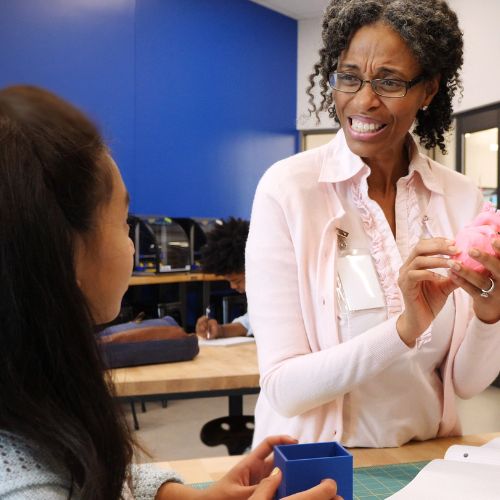
How to Use Visual Aids to Enhance Learning in Special Education
Visual aids play a crucial role in special education, helping students grasp concepts, stay engaged, and communicate more effectively. For students with disabilities, visual aids can bridge the gap between abstract ideas and concrete understanding, supporting learning in a personalized and accessible way. This post explores the importance of visual aids in special education and offers practical strategies for using them to enhance learning outcomes.
1. The Importance of Visual Aids in Special Education
Overview: Visual aids provide alternative ways to represent information, making it easier for students with special needs to understand and retain concepts. For students with cognitive, communication, or sensory challenges, visuals can enhance comprehension, reduce frustration, and foster independence.
Benefits:
- Improved Understanding: Visual aids can simplify complex information, making it easier to process and comprehend.
- Enhanced Engagement: Visuals capture students’ attention and maintain their interest in learning activities.
- Support for Communication: For students with speech or language difficulties, visual aids offer an alternative way to express themselves and understand instructions.
- Reduction of Anxiety: Visuals provide structure and predictability, which can reduce anxiety in students who struggle with transitions or unexpected changes.
Key Benefit: Visual aids empower students by offering them tools that cater to their learning styles and communication needs, ensuring a more inclusive and supportive learning environment.
2. Types of Visual Aids in Special Education
Overview: There are various types of visual aids that can be used in special education classrooms, each serving different purposes. These aids can range from simple tools like flashcards to more advanced technology such as interactive whiteboards or apps.
Types of Visual Aids:
- Visual Schedules: Help students understand their daily routine and anticipate transitions between activities, reducing anxiety and improving time management.
- Flashcards: Reinforce vocabulary, concepts, or instructions in a clear and concise manner.
- Charts and Diagrams: Break down information into smaller, digestible parts to support understanding of complex topics.
- Picture Exchange Communication System (PECS): Enables students with limited verbal abilities to communicate through pictures, helping them express needs and wants.
- Interactive Whiteboards: Allow for interactive lessons where students can engage with visual content in real-time.
- Videos and Animations: Provide dynamic explanations of concepts that may be difficult to demonstrate in a traditional classroom setting.
Key Benefit: By offering a variety of visual aids, educators can accommodate different learning preferences and cognitive needs, ensuring that all students have the resources they need to succeed.
3. Adapting Visual Aids to Meet Individual Needs
Overview: One of the most important aspects of using visual aids in special education is ensuring they are tailored to meet the specific needs of each student. This can involve modifying materials to match students’ cognitive levels, sensory preferences, or communication challenges.
How to Adapt Visual Aids:
- Simplify Visuals: Break down complex visuals into simpler, more digestible elements to avoid overwhelming students.
- Customize Content: Use images or symbols that are familiar and relevant to each student’s daily life to improve understanding and engagement.
- Use High-Contrast Colors: For students with visual impairments, use high-contrast colors or large fonts to enhance visibility.
- Incorporate Tactile Elements: For students with sensory processing challenges, tactile aids such as textured flashcards or 3D models can provide additional sensory input.
Key Benefit: Customizing visual aids ensures that they are meaningful and accessible to each individual student, maximizing their effectiveness as a learning tool.
4. Visual Aids and Communication Support
Overview: Visual aids are invaluable for students with communication difficulties, particularly those with autism spectrum disorders (ASD), speech delays, or non-verbal conditions. These aids can help bridge the gap between understanding and expressing language, enabling students to participate more fully in classroom activities.
How Visual Aids Support Communication:
- Picture Cards: These cards, often used in PECS, allow students to point to images representing words or actions they cannot verbalize, helping them express their needs.
- Choice Boards: Allow students to make choices about activities, snacks, or lessons by selecting visual options, promoting autonomy and communication.
- Social Stories: Use illustrated stories to explain social situations or expected behaviors, helping students understand social cues and improve their interpersonal interactions.
Key Benefit: Visual aids empower students with communication difficulties by providing them with tools to express themselves and participate in classroom discussions, fostering inclusion and independence.
5. Enhancing Comprehension Through Visual Aids
Overview: For students with cognitive or learning disabilities, visual aids can be used to simplify and reinforce abstract concepts. These aids provide concrete representations of ideas, making it easier for students to connect what they are learning with real-world applications.
How to Enhance Comprehension:
- Visual Timelines: Use timelines to help students understand the sequence of historical events or the order of steps in a process.
- Concept Maps: Break down complex subjects, like science or math, into smaller parts and display the relationships between them in a visual format.
- Step-by-Step Visuals: For tasks that require multiple steps (e.g., solving a math problem, completing an art project), use visuals to guide students through the process one step at a time.
Key Benefit: Visual aids make learning more accessible and meaningful for students by connecting abstract concepts to concrete visuals, which aids in memory retention and comprehension.
6. Using Technology to Create Dynamic Visual Aids
Overview: Technology has made it easier than ever to create and implement visual aids in special education. From interactive apps to digital presentations, technology can make learning more engaging and accessible for students with special needs.
Tech-Based Visual Aids:
- Interactive Learning Apps: Apps designed for special education offer personalized learning experiences that adapt to each student’s pace and preferences.
- Digital Flashcards: Platforms like Quizlet allow educators to create custom flashcards that students can access on tablets or computers, making learning more interactive and portable.
- Augmented Reality (AR): AR tools can provide immersive learning experiences, such as 3D models of the solar system or human anatomy, allowing students to explore complex subjects in an engaging, hands-on way.
Key Benefit: Technology enables educators to create dynamic, interactive visual aids that cater to diverse learning needs and make lessons more engaging for students with special needs.
7. Strategies for Implementing Visual Aids in the Classroom
Overview: To make the most of visual aids in special education, it’s important to implement them thoughtfully and consistently. By incorporating visuals into daily routines, lessons, and activities, educators can create a learning environment that supports the diverse needs of all students.
Tips for Effective Implementation:
- Consistency: Use visual aids regularly so students become familiar with them and understand how to use them independently.
- Incorporate Visuals into Routines: Start the day with a visual schedule and use visuals to signal transitions between activities.
- Pair Visuals with Verbal Instructions: Reinforce verbal instructions with visual aids to help students better understand and remember the information.
- Encourage Student Interaction: Allow students to interact with visual aids, such as pointing to pictures, arranging flashcards, or drawing diagrams, to make learning more engaging.
Key Benefit: Consistent use of visual aids helps students build familiarity with the tools and reinforces their learning and communication strategies over time.
8. The Long-Term Impact of Visual Aids on Learning
Overview: The benefits of using visual aids in special education extend beyond the classroom. By helping students develop communication, cognitive, and emotional regulation skills, visual aids equip them with the tools they need for lifelong success.
Long-Term Benefits:
- Improved Academic Performance: Visual aids enhance students’ ability to understand and retain information, leading to better academic outcomes.
- Enhanced Independence: By using visual tools to communicate, plan, and organize, students can become more self-sufficient in their daily lives.
- Better Social Skills: Visual aids support the development of social-emotional skills, helping students form positive relationships and navigate social situations with confidence.
Key Benefit: Visual aids provide students with long-term advantages by fostering independence, boosting confidence, and promoting better learning outcomes in both academic and social contexts.






